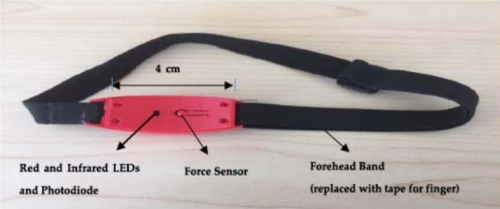Pulse Oximeter Sensors With Reduced Sensitivity to Motion Artifacts
Current SpO2 sensing technology, a method of estimating the amount of oxygen in the bloodstream, utilizes a transilluminated light method. This method of sensing, particularly when used on athletes and soldiers, is prone to motion artifacts. These motion artifacts manifest from high amounts of movement between the skin and the veins below the skin as well as a movement of blood in the veins as an appendage is moved rapidly. Motion artifacts can result in false alarm signals for low levels of oxygen and an overwhelming degradation of signal quality, making any signal hard to interpret.
To reduce the amount of motion artifact, a new method of SpO2 sensing has been developed. This method uses reflection of light rather than the standard transilluminated light in order to estimate the amount of oxygen in the bloodstream. Monitoring of oxygen levels can be done throughout various locations in the body, including locations that are not accessible with traditional oximetry. Sensors can be worn on the forehead, wrist, or fingers. Use on the forehead is an optimal location due to its planar surface and good blood perfusion and was not previously capable of utilization in other methods.

Key Features/Benefits
- Can be placed in more optimal locations on the body
- Can sense oxygen levels in more central locations, not previously accessible
- Less prone to motion artifacts